An Illustrated History of Old Sutton in St Helens, Lancashire
Part 16 (of 95 parts) - From Robins Lane to Sutton Academy Part 3 (1980-89)
Part 1 (1909-69) | Part 2 (1970-9) | Part 4 (1990-9) | Part 5 (2000-13) | Photo Album
Researched and Written by Stephen Wainwright ©MMXX Contact Me Research Sources
Part 5 (2000-13) | Education in Sutton | Photo Album
Researched & Written by Stephen Wainwright ©MMXX
Old Sutton in St Helens
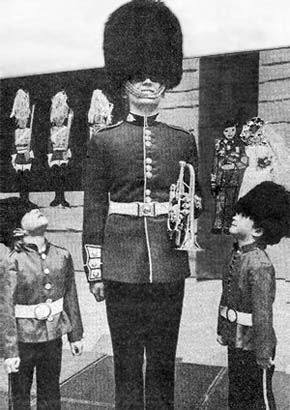
with Matthew Butler and Scott Slater
The Royal wedding of Prince Charles and Lady Diana Spencer in 1981 excited many St.Helens folk. Robins Lane Infants School took part in the celebrations with their own version of the wedding, with special guest Stuart Henderson of the Scots Guards. The Junior Lance Sergeant received special permission to wear his red uniform and many of the pupils wore colourful uniforms of their own, made by their parents and staff.
Both Stuart and his older brother Andrew Henderson were former pupils at Robins Lane. Andrew was also in the Scots Guards and the 19-years-old Lance Corporal was amongst the military trumpeters who sounded a fanfare for the Royal couple at the real wedding in St.Paul’s Cathedral in London.
In January 1982 David Drysdale from Kent Road became the first Sutton High pupil to be accepted at Oxford University and later in the year Chris Simpson and Paul Marsh won places at Imperial College London. The school was especially pleased with their achievements, as it had only begun catering for A-levels two years earlier.
During February thieves used crowbars to break into the school's store room, making off with equipment worth £3000. Their loot included a cassette copier and a tape deck used by the Sutton Sentinel production team. The two items had a combined value of £1300 and deputy head Harry Carr made a public appeal for their return. Amazingly there had been five previous unsuccessful attempts at breaking into the store room.
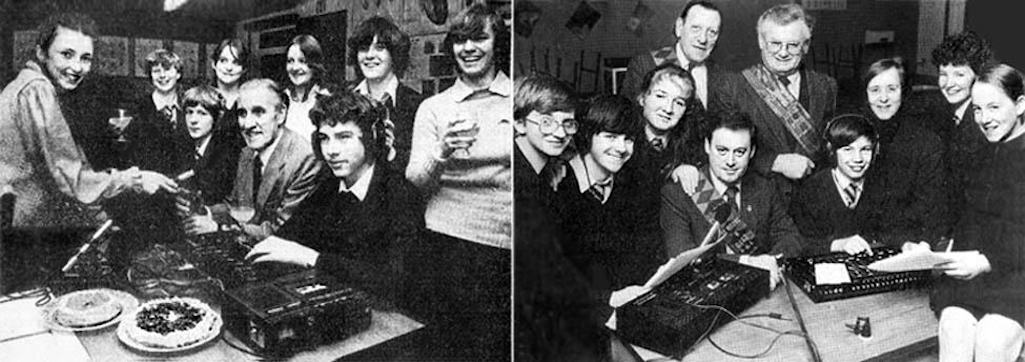
Left: Karen Rimmer interviews Leslie Ince for the Sentinel in 1981; Right: The Buffalos visit in January 1984

Left: Karen Rimmer interviews Leslie Ince for the Sutton Sentinel in 1981;
Right: Royal & Ancient Order of Buffalos visit the school in January 1984

Left: Karen Rimmer interviews Leslie Ince for the Sentinel in 1981; Right: The Buffalos visit in January 1984
The total number of PCs was eight, a miserable number by today's standards but quite impressive thirty years ago. In January 1984 the Royal & Ancient Order of Buffalos visited Sutton Sentinel and presented the team with a cheque for £200. Their coffers had also been recently boosted by £3000 from the Queen's Silver Jubilee Fund (1980); £410 from the Boys Brigade (Jan. 1981); £600 from Granada TV's 'This is Your Right' (Dec. 1982) and £1500 from the Trustee Savings Bank (June 1983).
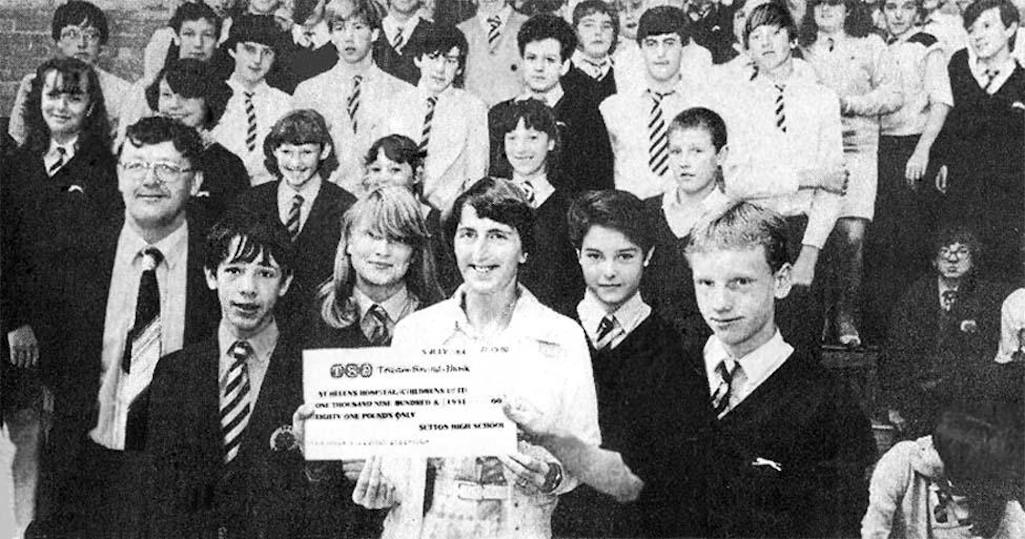
Pupils present a cheque to Dr. Celia Cramp of St.Helens Hospital to buy a blood pressure monitor

Pupils present a cheque to Dr. Celia Cramp of St.Helens Hospital

Sutton High pupils present a cheque to Dr. Celia Cramp of St.Helens Hospital to buy a blood pressure monitor
A new Social and Environment outdoor studies course was pioneered in September 1984. Sutton High were the first school in Merseyside to timetable such a course, which involved pupils studying their environment from a practical point of view. A major project would be the studying of Operation Groundwork and its impact on places such as Sutton Mill Dam. This new 'alternative curriculum' was in many ways an extension of a social studies course that had previously been run at the school.
An advertisement for teachers placed in the Guardian newspaper in October 1984 stated that Sutton High now had 1549 students on role, with 78 in the sixth form. That same month some senior school staff announced that they were withdrawing their 'goodwill'. This meant that their out of hours work, such as marking and sporting activities, would be suspended. Concerns over a delay in issuing a report into the claims made against headmaster Russell Long, had prompted this decision to 'work to rule'. The long-running dispute was finally ended in January 1985 when Mr. Long decided to retire. His position as headmaster was temporarily filled by David Atkin, a deputy head at Rivington Road School.
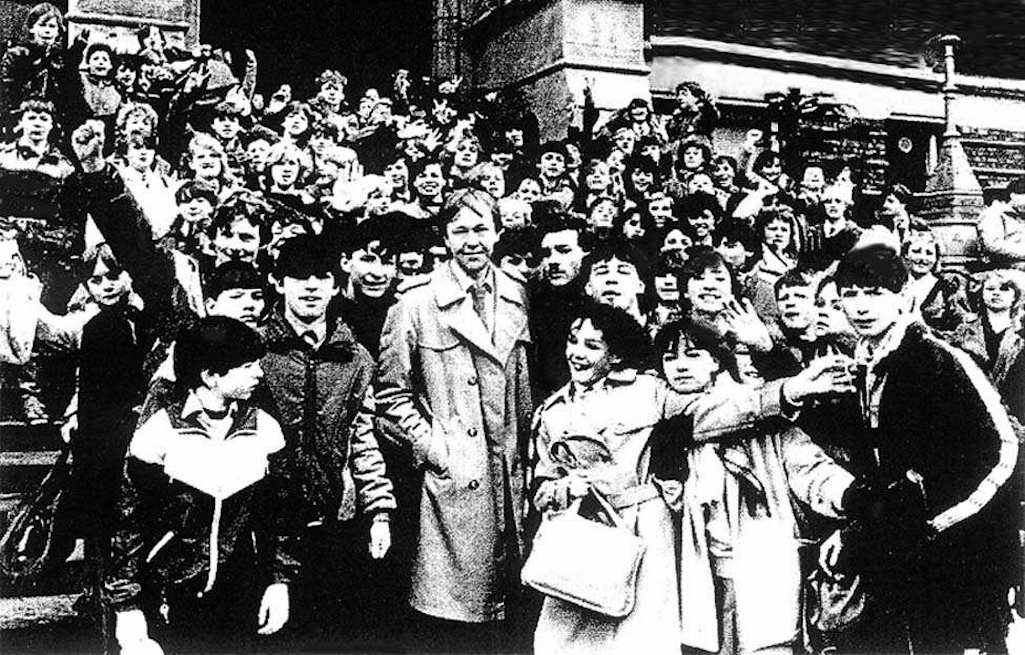
Cllr. Dave Watts (who became MP for St.Helens North) with Sutton High pupils outside St.Helens Town Hall in March 1985

Cllr. Dave Watts with Sutton High pupils outside the Town Hall in 1985

Cllr. Dave Watts with Sutton High pupils outside St.Helens Town Hall in 1985
The pupils were then taken to the Town Hall where Dave Watts addressed the whole group. He explained that the council did not have the funds to meet their teachers' 12 per cent pay demand. Some students were reported to have break-danced while the council boss was talking! After a brief discussion, the pupils elected not to go back to Sutton High. Instead they marched off to other schools to try and drum up support for a town-wide protest.
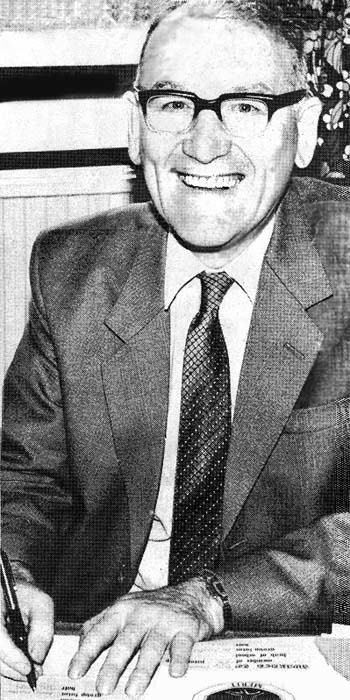
During December 1985 the school played a prominent role in the town's Christmas celebrations. Pupils performed nativity plays in the Hardshaw Centre and the Sutton High School Brass Band entertained the shoppers. In May 1986 teacher Martin Landells raised £922 for school funds through running the London marathon. This was through a combination of sponsorship and a novel competition to guess the time he'd take to complete the course. Mrs. Beryl Fairclough came closest in guessing Martin’s time of 3 hours, 17 minutes and 44 seconds and was awarded the prize of £50.
In October 1986 the school’s 'alternative curriculum' received national approval when representatives were invited to the Royal Society of the Arts in London. Sutton High’s Social and Environment Studies course was one of eight national projects honoured at an Education for Capability Recognition Day and one of only three presented to the invited guests. These included the Labour party leader Neil Kinnock. It was explained how links had been formed with four junior schools, the Fire Brigade, police, the visually impaired and Operation Groundwork, along with local businesses.
In March 1986, Sutton High School Brass Band won the schools section of the Wigan Music Festival. Two months later on May 13th, David Bellamy opened an aromatic garden in grounds near to the Rennie eye ward of St.Helens Hospital. This had been built by the children of Sutton High with a strong emphasis on the scent of the plants and flowers, as opposed to their visual appearance. Pupils were already actively involved in the production of the Sutton Sentinel talking newspaper for the blind. So this had been a natural extension in the students' concern for the interests of the visually impaired.
During December the Sutton High Brass Band was back in the Hardshaw Centre on several dates entertaining shoppers. Philip Ashcroft had revived the band a few years earlier and in March 1987 his colleagues were shocked to learn that his wife Glenys had been murdered. Matters got worse as the biology teacher and ex-Sutton High pupil Angela Page from New Street were both charged with Glenys's killing. On January 20th 1988 at Liverpool Crown Court, the pair were found guilty of the crime. Ashcroft had pleaded guilty to 'provoked manslaughter' and was given a life sentence for what the judge described as a "callous and premeditated" murder.
Safety concerns for pupils walking to school were back on the agenda in May 1987. A pelican crossing had been installed nine years earlier which allowed students to safely cross Marshalls Cross Road. However for the 70 pupils walking to Sutton High from the opposite direction, there was still danger. The children could safely walk along Elton Head Road to the 'Score' entrance to Sherdley Park. However the footpath then petered out, forcing the pupils to cross the busy road to a narrow strip of tarmac on the opposite side. The school’s PTA also raised their concerns for children walking along the road to the sports centre. The council promised to look into it but there was much delay.
Then in September 1988 brother and sister Barry and Dawn Brownbill were involved in a collision with a car in Elton Head Road while walking to school. The siblings were taken to hospital for treatment, although the pair were soon back home. The incident precipitated a furious reaction from the PTA, however seemingly by coincidence, St.Helens Council members had just approved a £35,000 footpath. This would lead directly from the Score to the school some 400 yards away and considerably improve pupil safety.
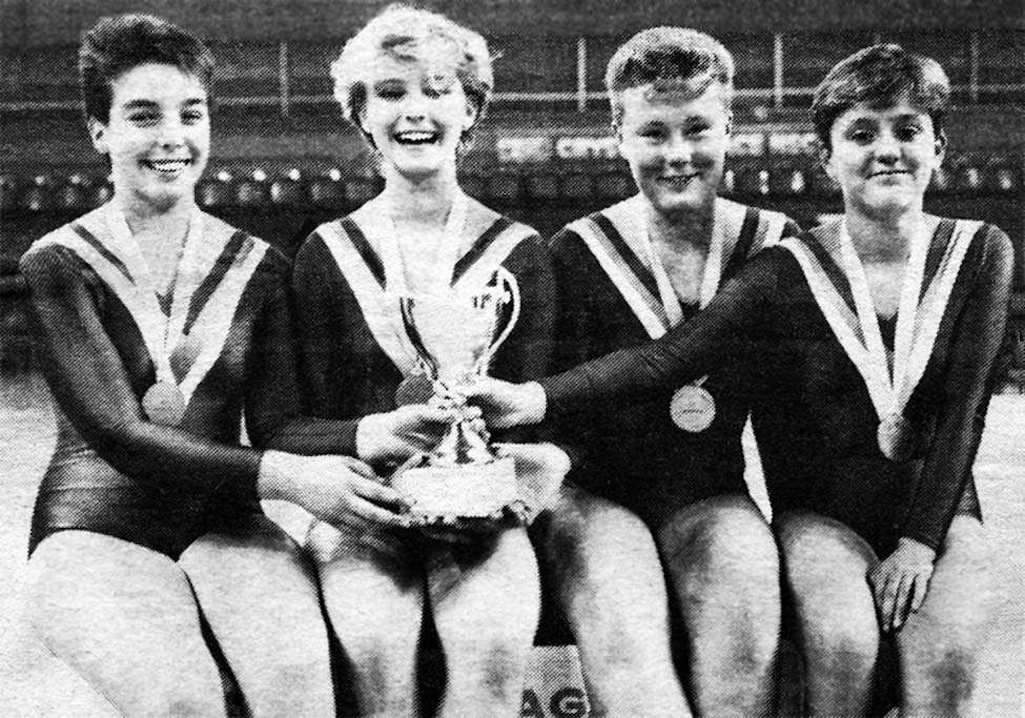
Under 15 winners of the 'Get in Shape, Girl! National Championships for Schools Rhythmic Gymnastics' competition

The under 15 winners of the 'Get in Shape, Girl! National Championships for Schools Rhythmic Gymnastics' competition in June 1987

U15 winners of the Get in Shape, Girl! National Championships for Schools Rhythmic Gymnastics competition
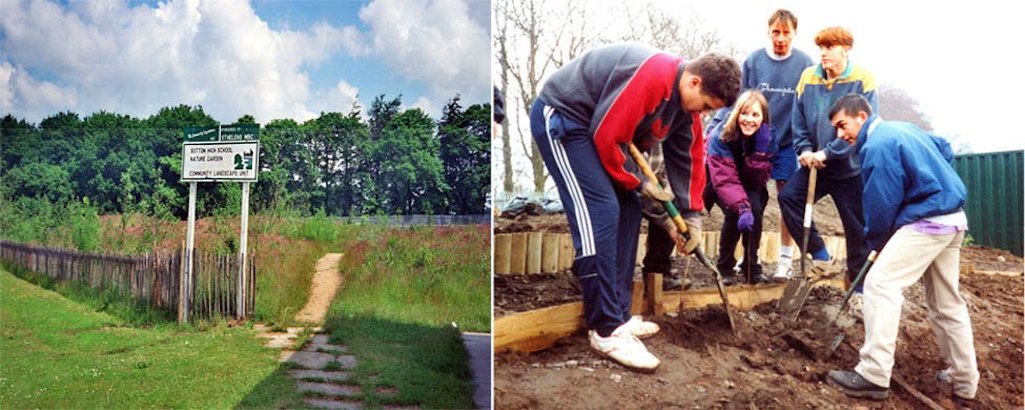
Left: The entrance to the Sutton High school nature reserve; Right: Pupils working on the reserve in April 1988

The Sutton High school nature reserve pictured in April 1988

Sutton High school nature reserve
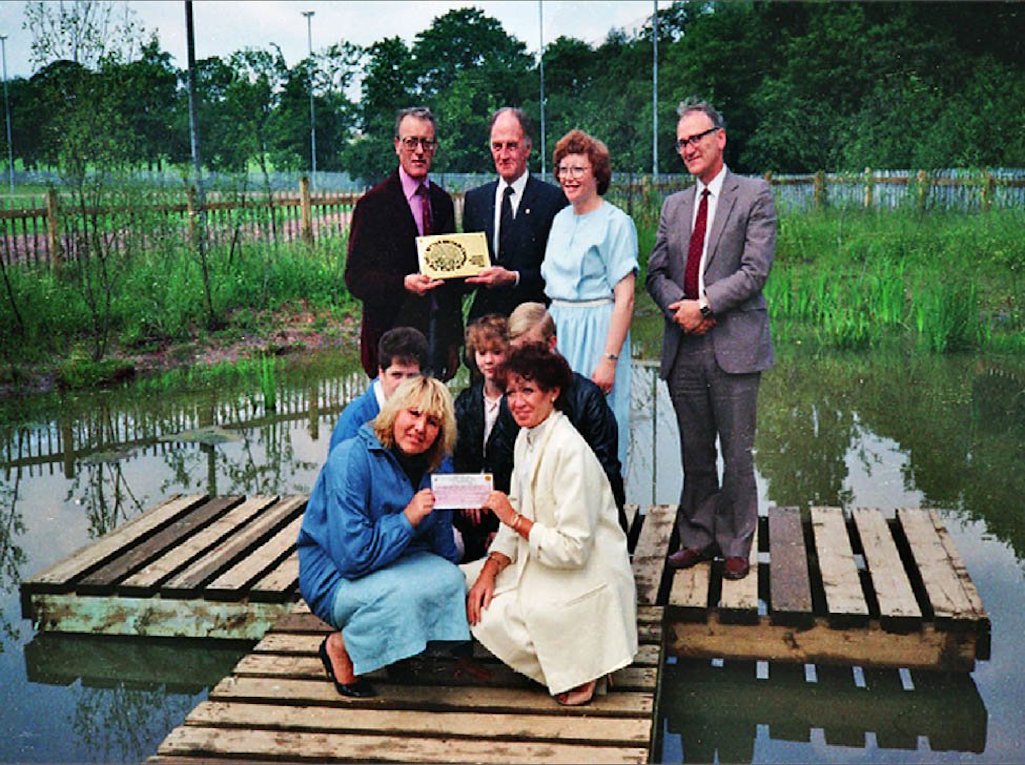
Pauline Birch (left) receives a cheque from Shell's Eileen Fennell on the pond at the Sutton High nature reserve

Pauline Birch (left) receives a cheque from Shell's Eileen Fennell

Pauline Birch (left) receives a cheque from Shell at the nature reserve
Then in February 1988, the project won a British Gas 'Make Britain Beautiful' conservation competition and students were invited to London to attend a special concert at Westminster Abbey. The reserve was created with assistance from the Groundwork Trust of St.Helens and it was a long-term project that many 4th and 5th year students worked on.
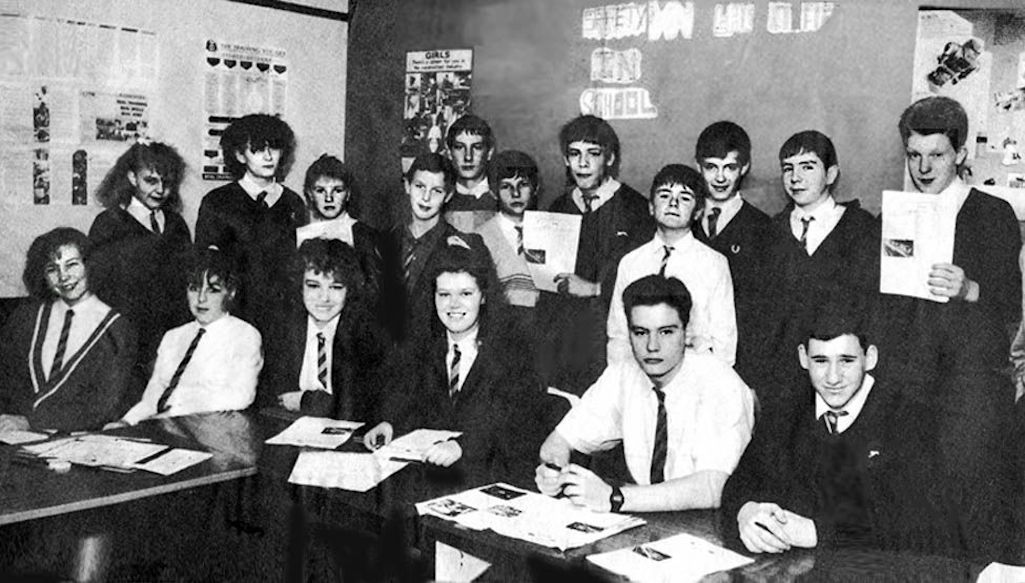
The editorial team behind Sutton High's newspaper 'Junction Express', which was first published in April 1988

The editorial team behind Sutton High's newspaper 'Junction Express'

The team behind Junction Express
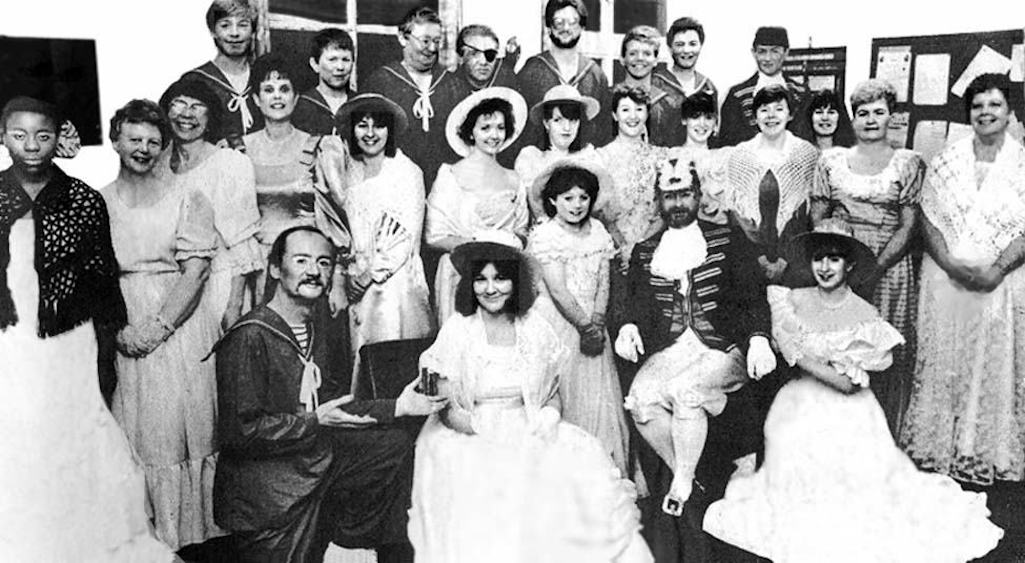
Staff and students who performed the Gilbert and Sullivan opera HMS Pinafore over three nights in April 1988

Staff and students who performed HMS Pinafore over 3 nights in April 1988

The cast of HMS Pinafore in April 1988
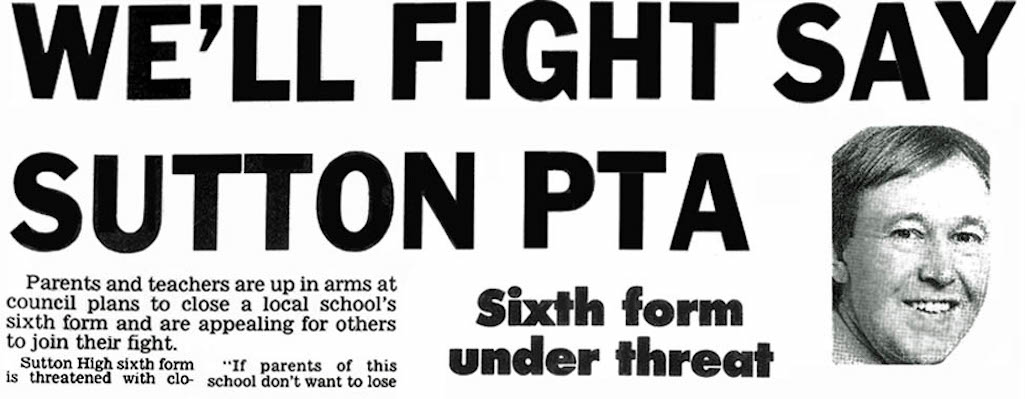
The Education Committee's Dave Watts back in the firing line as reported by the St.Helens Leader on October 20th 1988

Dave Watts back in the firing line as reported by the St.Helens Leader in 1988

Dave Watts back in the firing line!
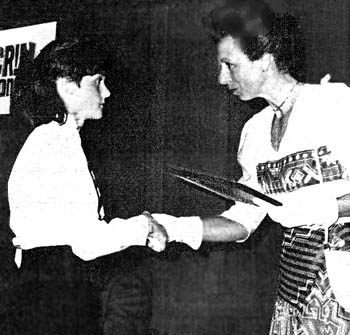
High School with a Crime Concern award
The PTA formed an action committee and a petition was signed by almost 2000 Sutton residents and presented to St.Helens Council. After months of uncertainty while responses to the proposals were being considered, the Education Committee issued their judgements in March 1989. The good news was that Sutton High's sixth form was not only going to be saved, but the Elton Head Road campus was in line for a big extension.
Concern over vandalism at the school led to the creation in November 1988 of the Sutton High Junior Crime Prevention Panel. The group, which mainly comprised first year pupils, wrote and produced a play and devised questionnaires and a noticeboard. The panellists also made a video called 'Vandalism in Sutton High School & Sutton' which took second prize in a national competition.
In August 1989 members of the Junior Crime Prevention Panel were given Royal approval for their efforts at reducing vandalism in St.Helens. The Princess Royal presented 12-year-olds Michelle Price, Philip Shields, Andrew Butterworth, Adrian Crow, Christopher Wright, Ian Brick, Stephen Green and Kristian Ellison with a Crime Concern award. Also in 1989 the school's tradition of involvement with the local community was recognised when the Education Authority permitted another change of name to Sutton Community High School. There would, however, be two more name changes to come!
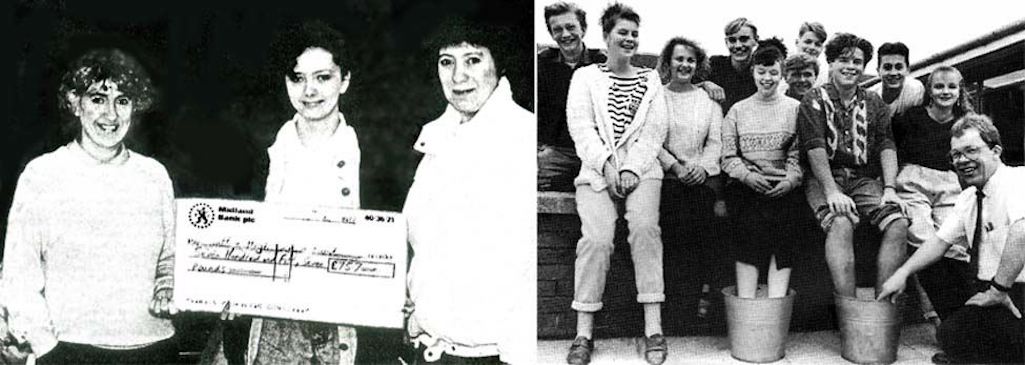
Left: Jean Keating presents a cheque to the PTA, proceeds of the 2nd walk; Right: students recover from a walk

Left: Jean Keating presents a cheque to the school PTA, the proceeds of the second walk; Right: students recover from a fundraising walk

Left: Jean Keating presents a cheque to the PTA, proceeds of the 2nd walk; Right: students recover from a walk
The 1990s would bring to the school a new arts centre, a terrible fire and closure and demolition of the Robins Lane secondary school site. Plus great academic success, along with an extension of the school’s charity and community work.



